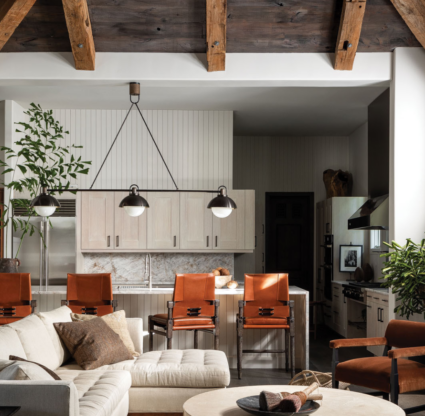Walking into a well-appointed room where a bulky TV is the focal point is the visual equivalent of a needle dragging across a vinyl record. Nothing detracts from decor like electronic clutter. That’s why great designers go to great lengths to conceal it. And, while anyone can hide them, the challenge lies in rendering electronics invisible and accessible.
Fortunately for the owners of this home, Naples-based designer Jeffrey Fisher is like a special ops commander when it comes to functional design. He eschews camouflaging with paintings or mirrors, which require fussing when you want to access your media center. Instead, he creates custom compartments that add texture and depth to the space, rather than simply concealing something. “We are always trying to conceptualize new ways to hide a TV in public spaces,” he says. For this project, he created sliding wooden screens that neatly cloak the megascreen. Jeffrey chose 4-by-8-foot slotted, walnut-stained mahogany, which he mounted on the wall between a pair of shelves. “When closed, the screens cover the television; when open, they park in front of the shelves,” he says.
Even exposed, the TV doesn’t detract from the room’s aesthetic. Jeffrey firmly believes that a TV should hang on a background that matches its tone—no light colors. So, here he opted for Phillip Jeffries Husk wallcoverings, made from strips of banana tree bark, in a dark indigo shade. He wanted to hide the hardware that anchors the screen, so he hung slotted doors from the top—with nuts and bolts fully concealed—and eliminated a bottom track. “The hardware operates so incredibly smoothly you can open each screen with a single finger,” he says.





